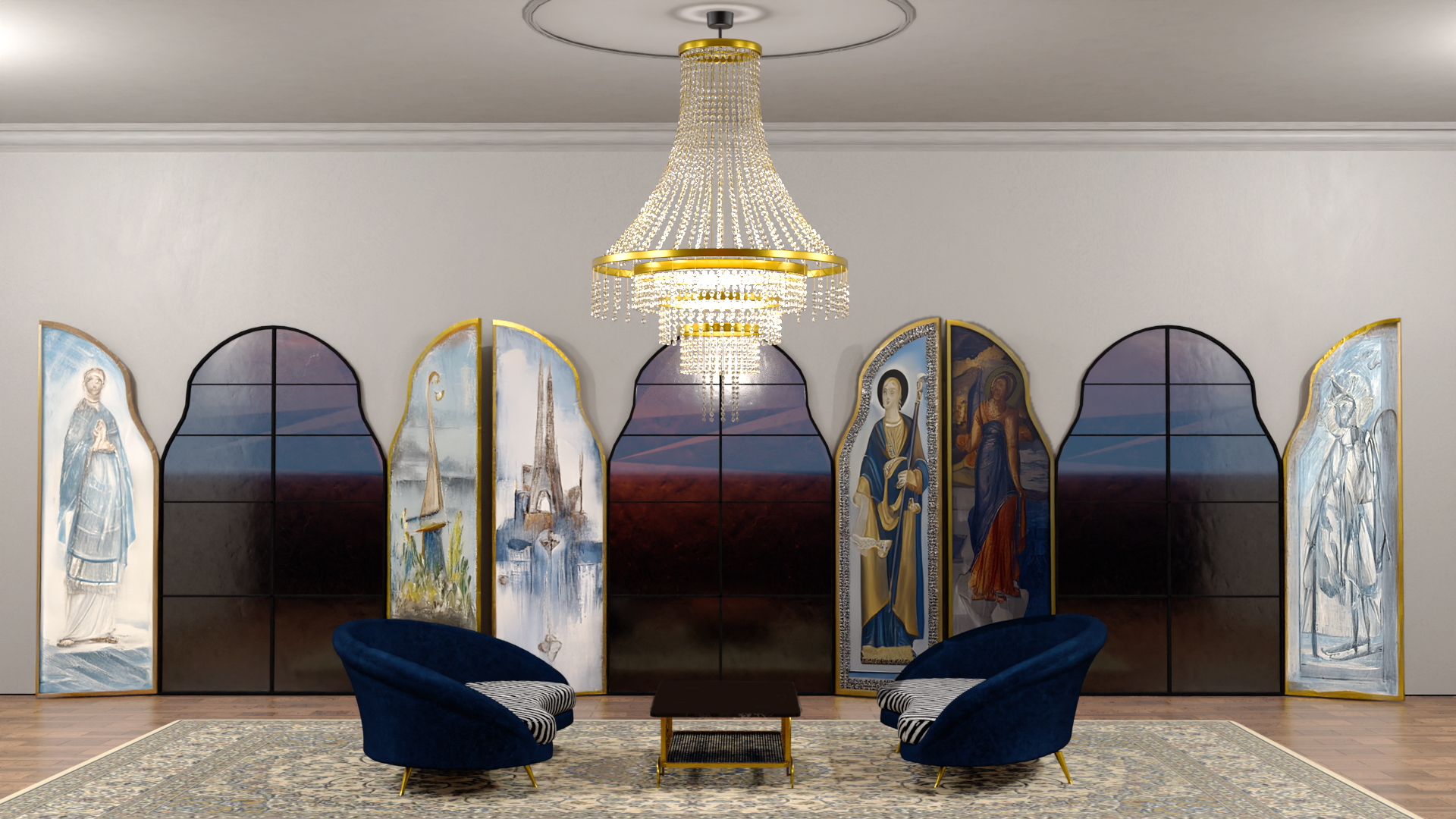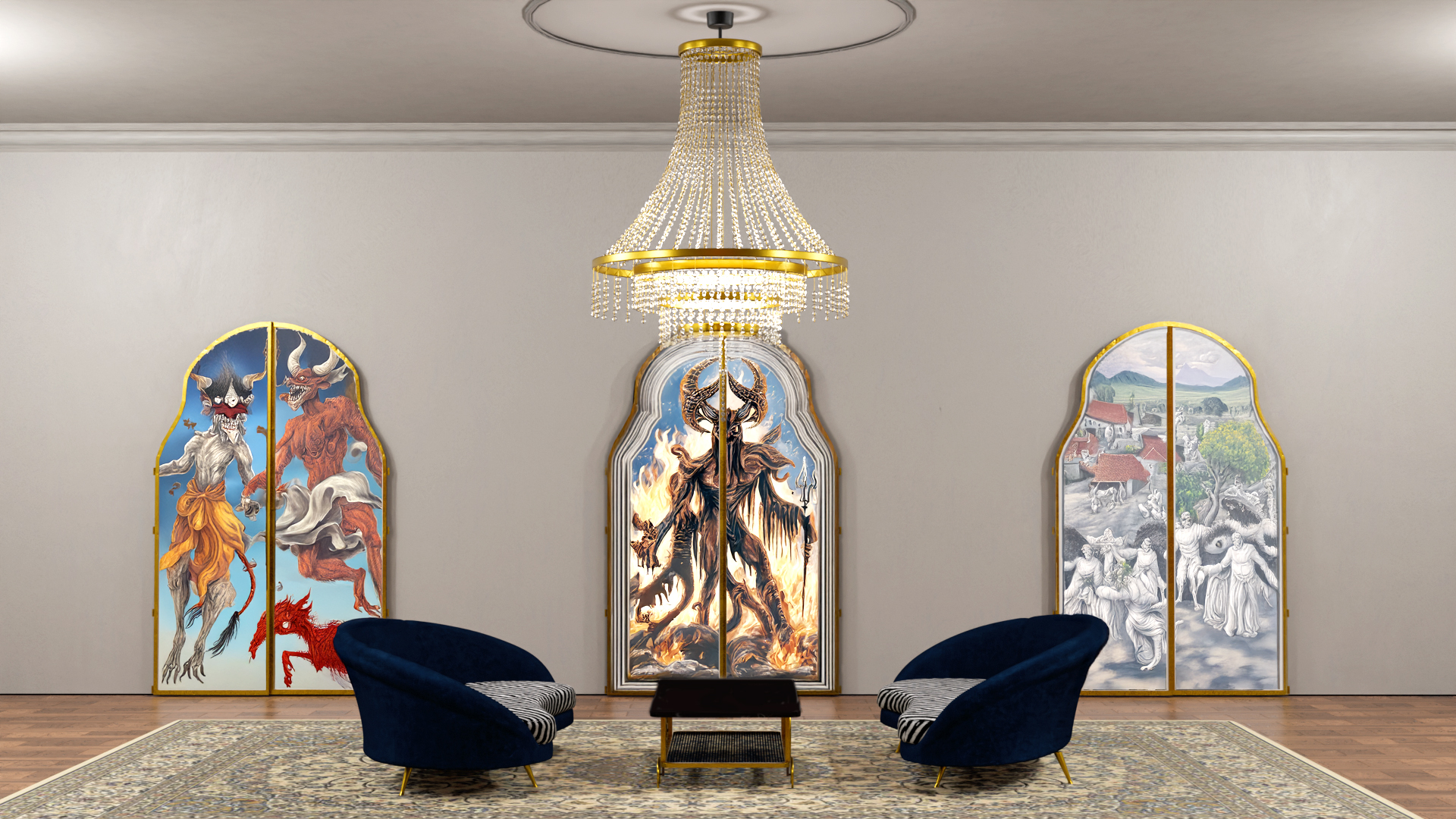TRYPTISCH WINDOW SECTION


In Museum De Lakenhal in Leiden
there is an impressive Triptych of the Crucifixion of Christ by the Leiden master Cornelis Engebrechtsz., dating from around 1515–1517. This medieval altarpiece is one of the absolute highlights of the collection and reflects the transition from late-medieval devotion to Northern Netherlandish Renaissance art.
Central panel: depicts the crucifixion of Jesus, flanked by the good and the bad thief. Beneath the cross we see the mourning Virgin Mary, John, Mary Magdalene, Veronica (holding the veil), and Nicodemus and Joseph of Arimathea.
Side panels: on the left, the sacrifice of Abraham (symbolizing Christ’s ultimate sacrifice); on the right, the bronze serpent raised by Moses (a foreshadowing of the cross as a means of redemption).
Predella (lower panel): shows the body of Adam from which a tree grows – according to legend, the wood of the cross – serving as a connecting metaphor between the Fall and Redemption.
My work on the left is based on the triptych from the Lakenhal Museum and on what I perceived during my visit. In my imagination, I saw the central panel as a large window extending to the floor, with the side panels serving as artworks framing the window.
What I want to express with the shutters is the contrast between heaven and earth through the use of light.
When the shutters are open and the light shines in, heaven enters and hell remains unseen. But when the shutters are closed and no light passes through, the gate to hell opens.
